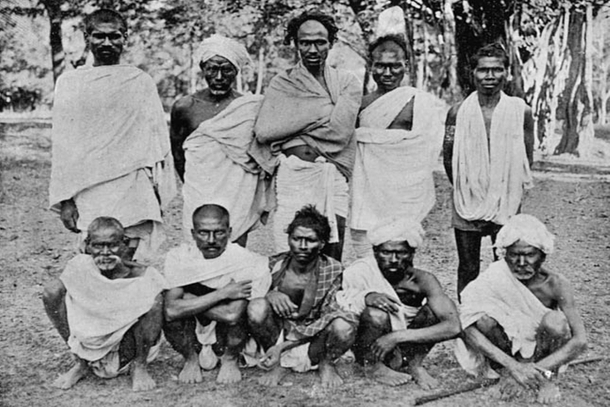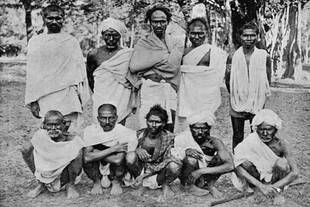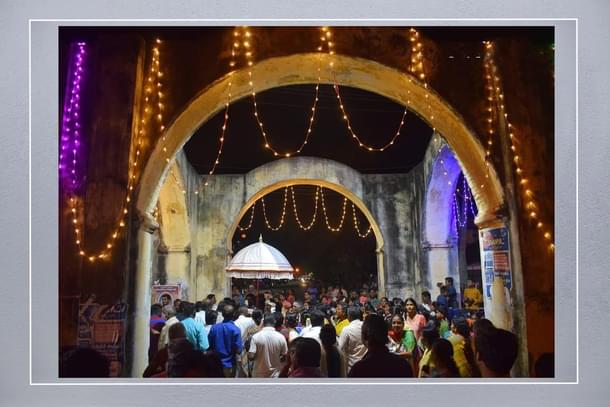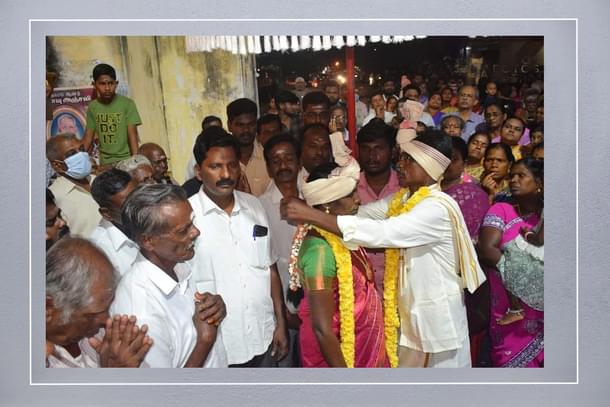Politics
The Great Paraiyar — Time India Vociferously Protests The Derogatory Use Of A Great Name
Aravindan Neelakandan
Mar 14, 2023, 09:55 AM | Updated 11:02 AM IST
Save & read from anywhere!
Bookmark stories for easy access on any device or the Swarajya app.


As one decides to write an article on the Paraiyar community and Hinduism, as soon as the word Paraiyar is typed, a red line comes below it.
The suggested word is Pariah. The word Paraiyar denotes respect. But the English word suggested, carries a negative implication.
Today, throughout the world, the word is still used with negative connotations.
For example, on 24 January, 2023, Ishaan Tharoor writing in Washington Post, used the term to characterise the Taliban regime. On 27 February 2023, New York Times published an article by Gulsin Halman who called Bashar al-Assad by the term to mean the way he was considered an outcaste by the most Western Governments.
Hinduism as usual has been blamed for making the community 'outcastes' and 'untouchables'.
In the last two hundred years, from ordinary conversations to text books, to dramas and movies to political rhetoric, it has been stated again and again that Hinduism, the Brahminical order, has been responsible for the degrading, in the most inhuman way, of a section of our own community.
An oppressed and exploited community forced to live in unhygienic sub-human conditions by the vile caste system, contrasted against evil oppressive Brahmins enjoying high culture, became the staple propaganda for justifying all institutions of imperial slavery — from the British Raj to evangelical intrusions.
Then there were the misguided Dharmacharyas and other feudal vested interests who believed that the communities characterised as 'scheduled' during the early centuries of colonisation were unfit for entering the temples.
Support of untouchability and untouchability itself became synonymous with Hinduism.
Even in such conditions, Gopalakrishna Bharathi (1810–1896), a great Tamil poet and a visionary created his musical drama — Nandan Charitram.
It attacked untouchability and demanded civil and religious rights for the Pariyar community on the basis of spiritual oneness. By this time, the community had been considered untouchable for a couple of centuries.
The impact of this musical drama, filled with mystic rendering, was immense.
As movie technology entered India, the life of Nandanar became the subject of movies and these were in turn based on Gopala Krishna Bharati's music drama.
From 1923 to 1942 not less than five movies were made on Nandanar. Of these the most famous is the 1942 movie, whose scintillating song to this day moves millions in Tamil Nadu.
The clip shows the Brahmin landlord who denied permission to Nandanar to go to Chidambaram—'Should a Pariah even desire Darshan at Chidambaram'—later going and falling at the feet of Nandanar.
Unfortunately, a side effect of this otherwise great drama was that the upper caste landlord, who was not a Brahmin in the original tradition of Nandanar, was made into a Brahmin and the original Jaati of Nandanar, which was not Pariyar, became Pariyar in the popular perception.
In a way, it represented the social fault lines getting created then, in the prosperous delta region of Tamil Nadu.
The larger social awareness and Bhakti that the play generated was and continues to be great. Yet these two minor distortions played into hands of those who wanted to portray Pariyar as being held untouchables for millennia.
But Sanatana Dharma has always held its memories sacred and unextinguished. One such is the tradition of 'the Great Paraiyar who ascends on the elephant' in Thiruvarur.
This tradition that had been lost within the colonial centuries and post-colonial decades of darkness has been revived by Hindu organisations.
In 2021, Swarajya reported in detail about a great ceremony that takes place in Thiruvarur temple — traditionally one of the most sacred of the Saivite Hindu temples of Tamil Nadu.
In the ceremony the clan leader of Pariar community is venerated as Indra and a sacred marriage ceremony is re-enacted between himself and his wife who are treated with royal honour and ceremonial protocols.
This year also the tradition was celebrated and the couple were given the royal honour with the white umbrella.

At the Indra Mandapam, at the eastern side of the temple, the ceremonial procession was taken out. The wife and husband were honoured.

On 9 March 2023, during the Thiruvarur Panguni Uttaram festival, this event was conducted and the divine marriage was enacted with devotion and fervour.

It is quite revealing that the media — local, national and international — which is on the job in reporting about caste atrocities and injustice, is severely underreporting events such as these.
That every social atrocity and every event of social exclusion in the society should be exposed, goes without saying. That is a must. Equally important is also the reporting of such events which provide social repentance and healing through the indigenous spirituality which is Hindutva.
It will be an ever lasting act of Hindutva re-assertion if the Government of India declares clearly that the derogatory use of the term Pariah should be stopped throughout the world and purged from dictionaries.
(With inputs from: Sri Kay Kannan, Kumbhakonam and Sri Shanmugam Velmayil Thiruvarur).





